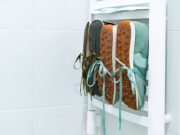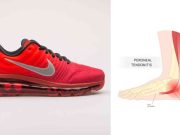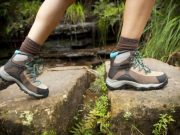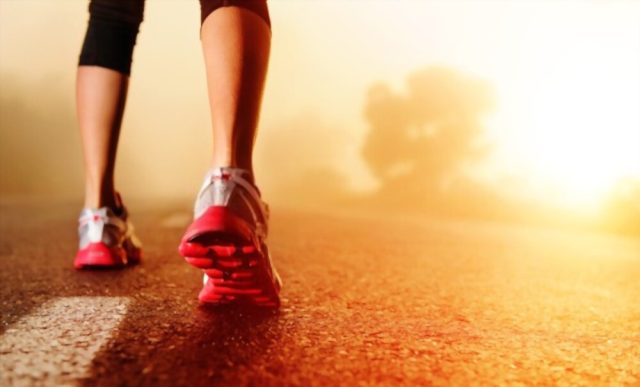Generally, running shoes should be replaced after 300 to 500 miles of use. Running shoes are the most crucial piece of equipment for any runner. They ensure your feet are supported, comfortable, and protected. However, running shoes aren’t designed to last for unreasonable mileage.
That is why we’ve come up with a list of tips and tricks to help you extend the life of your pair of running shoes. But before that, let’s get into the science of how long running shoes last.
Table of Contents
How many miles should running shoes last?
– Generally, running shoes should be replaced after 300 to 500 miles of use.
– Common signs that running shoes need to be replaced include visible wear and tear, worn treads, and midsole wrinkling.
– Walking shoes have the same lifespan as running shoes (300 to 500 miles), so it’s important to replace running shoes when they show signs of wear.
– The lifespan of running shoes depends on the type of shoe, the runner’s gait, the terrain and temperature of runs, and how often the shoes are used for non-running activities.
– If you’re a frequent runner, swap running shoes every 300 to 500 miles, so your shoes stay energized from daily use. This will help keep your feet healthy and injury-free.
How to Extend the Life of Running Shoes
To maximize the life of your running shoes, it’s important to take care of them and keep them as hygienic as possible. It’s also worthwhile to own multiple pairs of shoes and rotate them so that you can get a variety of experiences while running. This will help distribute the stresses of running and keep your sneakers fresh and comfortable.
One way to do this is to wear shoes on different surfaces, such as trails and pavement. Another is to pair running shoes with different styles, such as midfoot or high-top shoes, depending on your preference and running style.
When purchasing new shoes, look for shoes with good treading under the sole and durable construction. Avoid shoes with open mesh or lace-up designs, as these tend to wear quickly due to exposure to dirt and debris. Also, dry your shoes after getting wet to keep them in the best condition.
When it comes time for a new pair of shoes, consider replacing your old pair after putting on a certain number of miles, typically 250-500 miles. This will ensure that your sneakers provide optimal support and cushioning for your running routine. You can also take preventive measures by using a waterproofing spray or shoe trees to maintain the shape of your shoe.
How Many Miles Do Running Shoes Last?
– Running shoes typically last between 300 and 500 miles or four to six months. Factors like a runner’s gait, terrain, temperature and non-running activities can affect the shoes’ lifespan.
– Generally, running shoes should be replaced every 300 to 500 miles. However, this varies depending on individual factors such as the type of running, mileage, tread, and Sole of the shoe.
– Variables such as terrain, weight, foot strike, and running mechanics can also influence the life of running shoes. Generally, running shoes should be replaced every 300 to 500 miles, though this varies depending on individual factors.
How many miles should you run in a pair of shoes?
– Running shoes can last for over 500 miles, according to a 2011 Footwear Science study. But it largely depends on your running style, weight, terrain, and shoe type. Usually, running shoes can last for more than 600 miles.
– Generally, it is recommended to replace running shoes every 300 to 500 miles. This is due to factors like wear and tear of the shoes or damage from improper care. So if you’re new to running, consider investing in high-quality shoes designed for running.
– If you run often, consider replacing your shoes at least every three months, as this will help prevent injuries and improve your running efficiency.
5 Best Tips for increasing the Life of Your Running Shoes
When it comes to running shoes, you don’t want your pair to last for long. This is because running shoes only last a few months or even weeks of running before they get torn and worn out.
To ensure that your pair of running shoes last for longer, follow the tips below:
01: Rotate your shoes as much as possible. Running in the same pair of shoes for too long may lead to sore feet, blisters, and other foot problems. Rotating your shoes will help keep them fresh and avoid these issues.
02: Always wear proper footwear when running. Make sure that your shoes provide the utmost support and protection for your feet. Also, make sure that they are comfortable and fit well.
03: Wash your running shoes after every use. This will help remove dirt and debris that may accumulate on the shoe’s surface over time. This will help the running shoe last longer and function properly.
04: Store your running shoes in a well-ventilated place between wears. Keeping them in a warm environment will cause them to deteriorate faster. Instead, store them in a dry and warm environment to prolong their lifespan.
05: Don’t run in cold or wet shoes. Running in cold or wet shoes could deteriorate the shoe’s protective layer, resulting in injury or discomfort for the runner. Replace your running shoes 2-4 weeks before a marathon. Doing so will help avoid soreness and blisters while running long distances on the pavement.
Read More :
01: What to look for in running shoes?
02: What to do with old running shoes?
03: What is a neutral running shoe?
04: What is a drop in running shoes?
05: What is a Stability Running shoe?
06: How long do running shoes last?
Conclusion
Running shoes are expensive because they last for a long time. Besides, your running shoes allow you to run efficiently and effectively and cushion the shock of running to your joints. If you want to extend the life of your running shoes, here are some things you can do to help your running shoes last longer. First of all, use running shoes that fit well and feel comfortable. Keep them clean and dry to prevent dirt from accumulating inside the shoe. Lastly, choose running shoes made of high-quality materials that offer maximum cushioning or support to keep your feet comfortable while running.
































